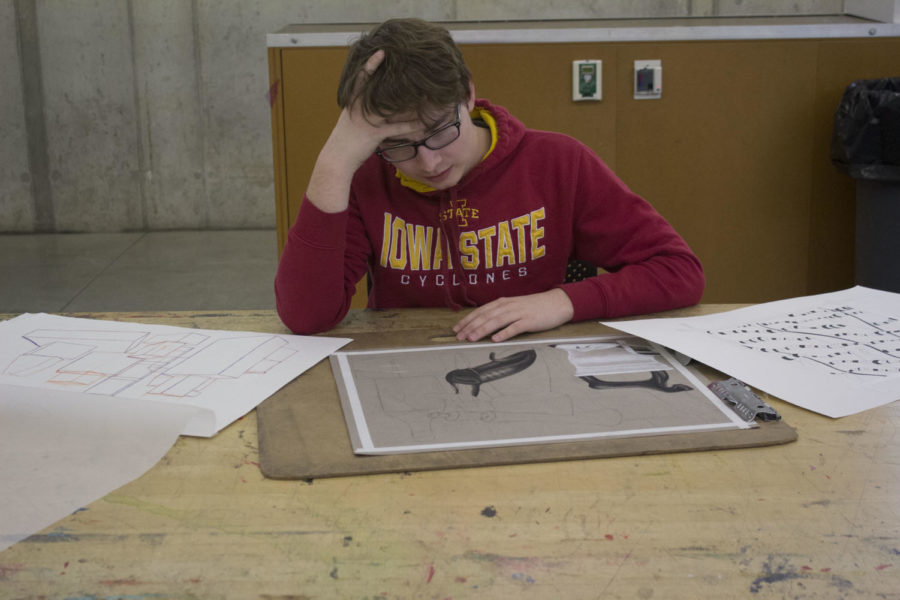Design students face challenges unique to their majors
Kennedy DeRaedt/Iowa State Daily
Jacob Gasper, sophomore in pre-architecture, looks at some of the projects he has worked on. Design students put hours of work into their projects.
March 26, 2017
When describing the typical college experience, incoming freshmen may think about test taking, long nights of textbook readings and writing papers the size of a small novel.
Though common for many majors on campus, several programs at Iowa State function in a non-traditional manner. Among the largest of these groups are those enrolled in the College of Design, where flash cards are traded for long nights of studio time.
For the design students, time commitment comes in the form of the “the core,” a set of required courses that ends with a cumulative portfolio.
This portfolio, containing works created by students during their time in the introductory courses, will determine if a hopeful is accepted into their respective field of design.
Much like music majors, who must audition their way into the program, the pressure of not being accepted can be a stressful burden for those who have no backup career options.
“Last year was probably the most stressful year of my life,” Eliza Sibley, sophomore in graphic design, said. ”There’s a constant voice in the back of your head reminding you that if you don’t make it in this year, then that’s time wasted in college.”
Sibley didn’t have a backup plan had she not been accepted into the program. Her biggest distraction during the academic year was worrying about projects that would go to waste if she indeed needed to repeat a year.
A long-standing misconception of the College of Design is students often spend countless hours within the building, leaving only to eat. Though Sibley spends around 10 to 15 hours a week on projects, she sees about a 50/50 split of students who use the design space.
“I choose not to use the design building because I’m easily distracted,” Sibley said. ”But I do know many students who do indeed stay from the morning all the way until the night working on their projects.”
Though not common for every student, Jacob Gasper, sophomore in pre-architecture, has experienced the late nights in the college.
“I remember when I first began working in the studios and I would leave around 11:30 [p.m.] thinking that was pretty late,” Gasper said. ”However, there’s people who will stay there much, much later.”
Despite being focused on architecture, Gasper, and all incoming design students, must complete a variety of design classes. This includes painting, sketching and sculpting, with each project requiring its own separate materials.
Whereas most majors focus on written tests and papers, making textbooks a requirement, the College of Design utilizes various tools and materials.
“On our first week I was given a list of 10 to 12 items that were required by the end of the week,” Gasper said. “I figured it wouldn’t be too bad, but I ended up spending $250 that first day. Then the next week was a painting project, which required new materials, so it ends up adding up quickly.”
Students in the College of Design must learn to adapt quickly and discover new forms of art. Simply not knowing how to paint properly is not an excuse, but rather an opportunity to better a person’s overall artistic merit.
“Last year we focused on painting, which I’m pretty good at, however, we then switched to sketching, which I’m not very skilled in,” Gasper said. ”It’s not an excuse just to not be good at something. You have to work outside of class to better yourself and learn.”
Gasper said some people may see design majors as students taking the easy road, only being required to draw and paint. But he believes that misconception is somewhat inaccurate.
“I know people think ‘it’s just drawing,’ which it is, but it’s so much more than that and it’s kicking my butt,” Gasper said. ”Some of these professors are professional artists, so the standard is very high for all of our work.”







